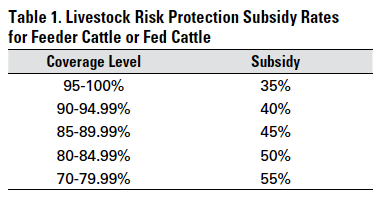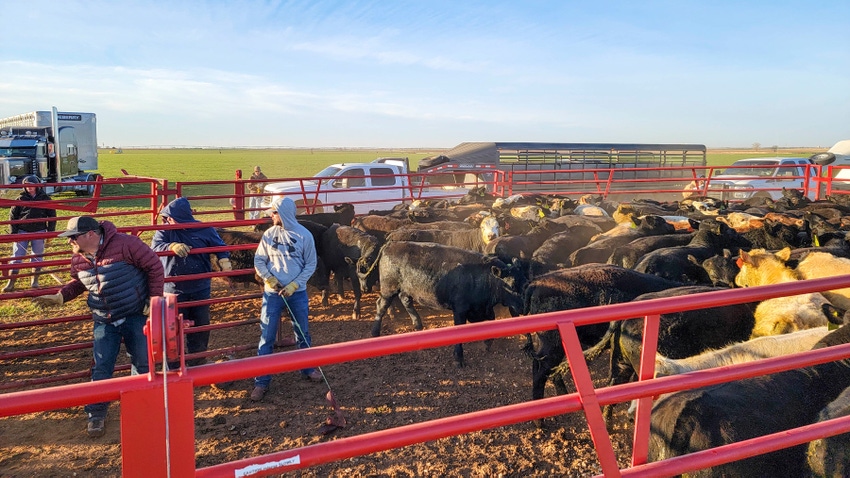Secret Factors to Take Into Consideration When Picking Animals Risk Protection (LRP) Insurance Coverage
When examining choices for Livestock Danger Security (LRP) insurance policy, numerous essential factors necessitate cautious factor to consider to guarantee effective risk management in the agricultural field. Picking the ideal protection alternatives tailored to your specific animals procedure is paramount, as is comprehending how superior expenses correlate with the degree of security supplied. Furthermore, the qualification standards for different kinds of animals and the adaptability of the plan to adapt to altering conditions are critical elements to consider. Moreover, the efficiency and transparency of the insurance claims procedure can dramatically affect the total experience and economic end results for animals manufacturers. By purposefully browsing these critical aspects, producers can secure their investments and mitigate potential risks properly.
Protection Options
When considering Livestock Danger Security (LRP) insurance coverage, it is necessary to understand the different insurance coverage choices offered to mitigate risks in the agricultural sector. Animals Danger Security (LRP) insurance offers various protection alternatives tailored to fulfill the diverse requirements of livestock producers.
Another crucial insurance coverage option is the endorsement duration, which establishes the length of time the coverage holds. Producers can choose the recommendation period that finest matches their production cycle and market conditions. Additionally, protection degrees and prices differ based on the sort of animals being guaranteed, giving manufacturers the adaptability to personalize their insurance policy plans according to their particular needs.
Understanding the various coverage choices readily available under Animals Threat Security (LRP) insurance coverage is critical for producers to make enlightened decisions that efficiently shield their livestock operations from market unpredictabilities.
Costs Expenses

Livestock Risk Protection (LRP) insurance supplies necessary coverage options customized to mitigate dangers in the agricultural market, with a substantial element to think about being the estimation and structure of premium expenses. When determining premium prices for LRP insurance, a number of elements enter into play. These include the kind and variety of livestock being guaranteed, the insurance coverage degree picked, the present market value, historical rate data, and the length of the coverage duration. Insurance providers might likewise think about the location of the farm, as geographical factors can impact the general risk profile.
Premium expenses for LRP insurance policy are usually calculated based on actuarial data and run the risk of evaluation designs. Insurance companies examine historic data on livestock prices and production costs to identify a proper costs that mirrors the level of risk entailed. It is essential for livestock manufacturers to very carefully examine premium costs and coverage options to guarantee they are appropriately secured versus potential monetary losses because of adverse market conditions or unanticipated occasions. By understanding exactly how superior expenses are determined and structured, producers can make informed choices when selecting the ideal LRP insurance coverage for their operation.
Qualified Animals
The resolution of qualified livestock for Animals Threat Protection (LRP) insurance coverage includes cautious consideration of particular requirements and qualities. Animals kinds that are commonly eligible for LRP insurance coverage include feeder livestock, fed lambs, swine, and livestock.
Feeder livestock, for instance, are commonly qualified for LRP protection if they drop within defined weight arrays. Lambs are an additional classification of livestock that can be taken into consideration for LRP insurance coverage, with variables such as weight and age playing a vital duty in determining their qualification.
Before selecting LRP insurance policy for animals, manufacturers need to carefully review the eligibility criteria outlined by the insurance policy supplier to guarantee their pets meet the essential needs for insurance coverage.
Plan Flexibility
Policy versatility in Animals Threat Protection (LRP) insurance policy allows producers to tailor coverage to match their particular requirements and run the risk of monitoring approaches. This adaptability equips animals producers to customize their insurance coverage based on variables such as the type of livestock they have, market conditions, and company website individual threat resistance levels. One vital element of policy flexibility in LRP insurance coverage is the capacity to pick protection levels that line up with the manufacturer's financial goals and take the chance of exposure. Manufacturers can select insurance coverage levels that protect them against prospective losses because of fluctuations in livestock rates, guaranteeing they are sufficiently guaranteed without paying too much for unnecessary insurance coverage. In addition, LRP insurance policy offers adaptability in policy period, enabling manufacturers to select coverage durations that ideal fit their manufacturing cycles and advertising and marketing timelines. By using adjustable alternatives, LRP insurance policy makes it possible for manufacturers to effectively manage their threat exposure while safeguarding their animals procedures against unforeseen market volatility.
Insurance Claims Refine
Upon experiencing a loss or damage, producers can launch the insurance claims process for their Livestock Risk Protection (LRP) insurance policy by immediately contacting their insurance coverage company. It is critical for producers to report the loss as soon as possible to expedite the claims procedure. When connecting to the insurance copyright, producers will require to supply detailed info regarding the event, consisting of the day, nature of the loss, and any type of appropriate documentation such as vet documents or market value.

After the assessment is total, the insurance service provider will make a decision pertaining to the insurance claim and interact the end result to the manufacturer. If the claim is accepted, the producer will certainly obtain why not find out more payment according to the terms of their Livestock Threat Defense (LRP) insurance coverage. Bagley Risk Management. It is necessary for manufacturers to be knowledgeable about the cases process to make certain a smooth experience in case of a loss

Conclusion
In verdict, when selecting Livestock Danger Defense (LRP) insurance coverage, it is necessary to consider insurance coverage alternatives, premium prices, qualified animals, plan flexibility, and the insurance claims procedure. These vital aspects will help make certain that farmers and breeders are appropriately shielded versus prospective risks and losses connected with their livestock procedures. Making a notified decision based on these considerations can inevitably lead to better economic protection and satisfaction for livestock producers.
Animals Threat Security (LRP) insurance coverage provides different coverage options customized to fulfill the diverse demands of animals manufacturers.The resolution of eligible livestock for Animals Danger Security (LRP) insurance protection involves careful factor to browse around this web-site consider of certain criteria and qualities.Policy flexibility in Animals Risk Security (LRP) insurance policy enables manufacturers to customize coverage to fit their specific demands and risk administration approaches.Upon experiencing a loss or damage, producers can launch the claims process for their Livestock Threat Defense (LRP) insurance by promptly calling their insurance policy supplier.In conclusion, when choosing Animals Danger Security (LRP) insurance, it is crucial to consider coverage alternatives, premium costs, eligible animals, policy adaptability, and the insurance claims procedure.
Comments on “Elevate Your Knowledge with Bagley Risk Management”